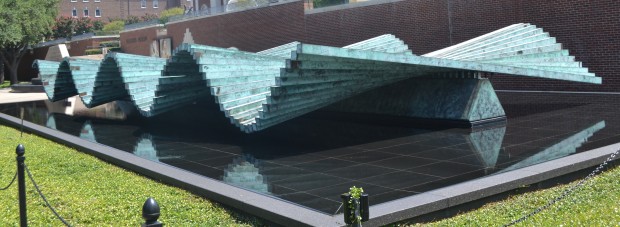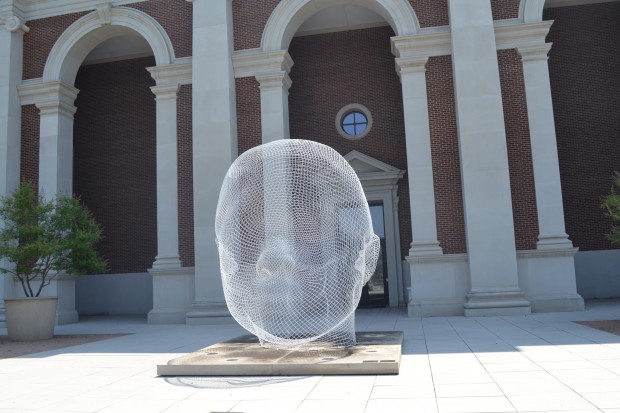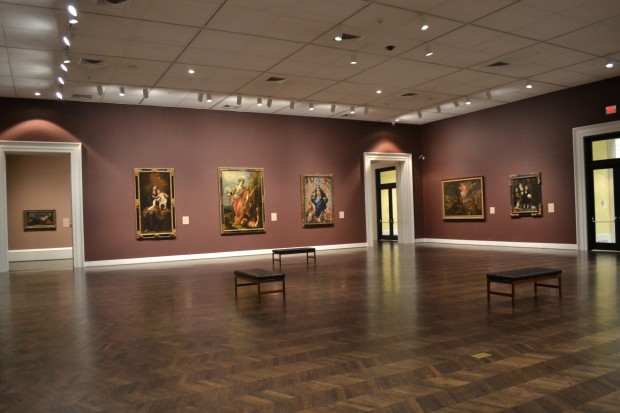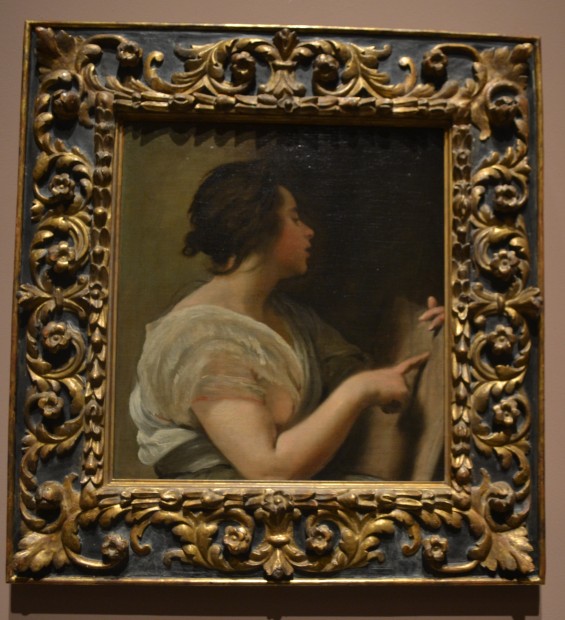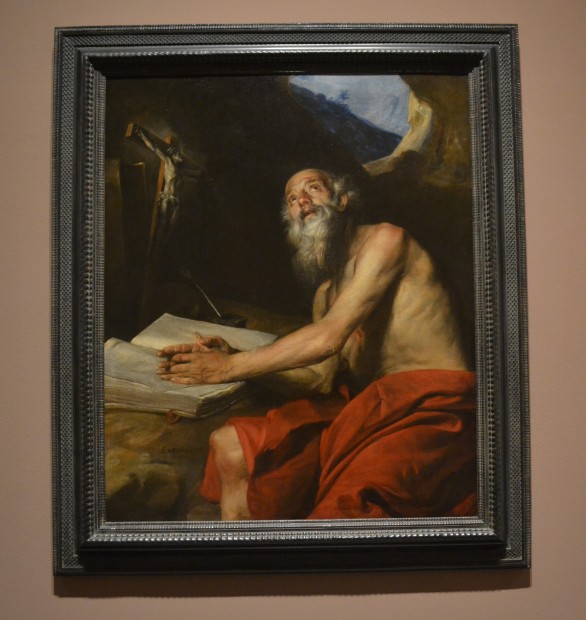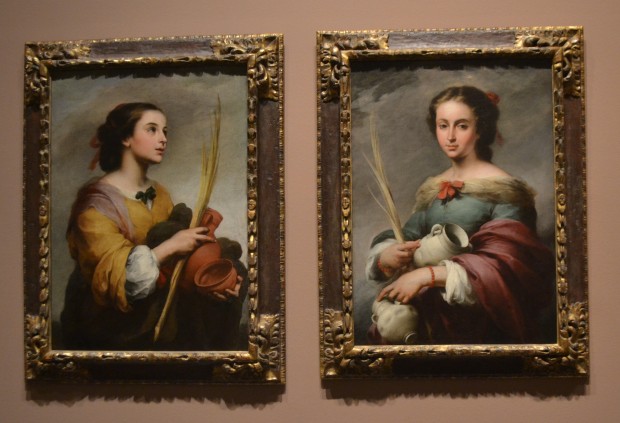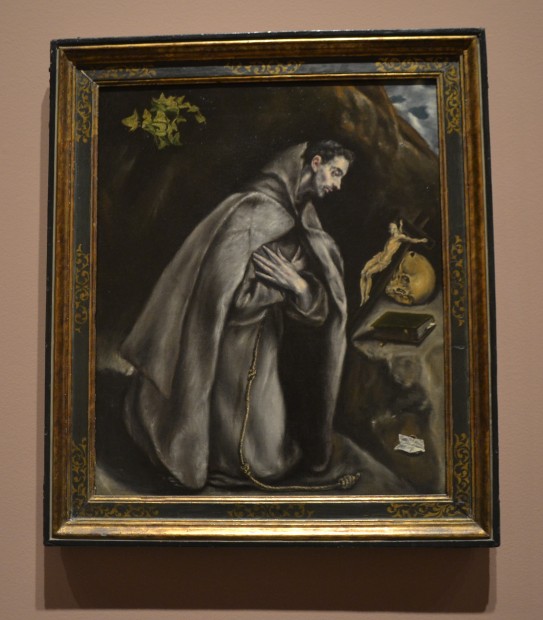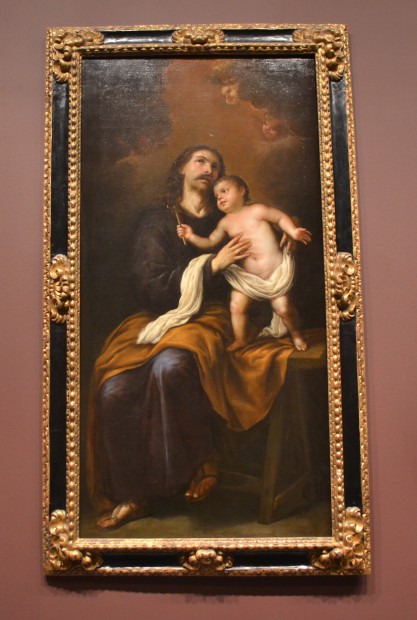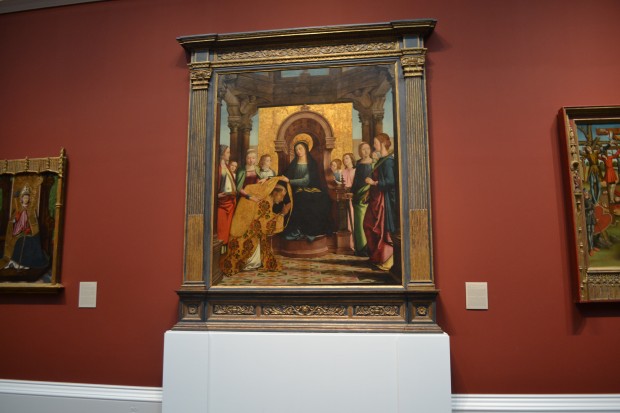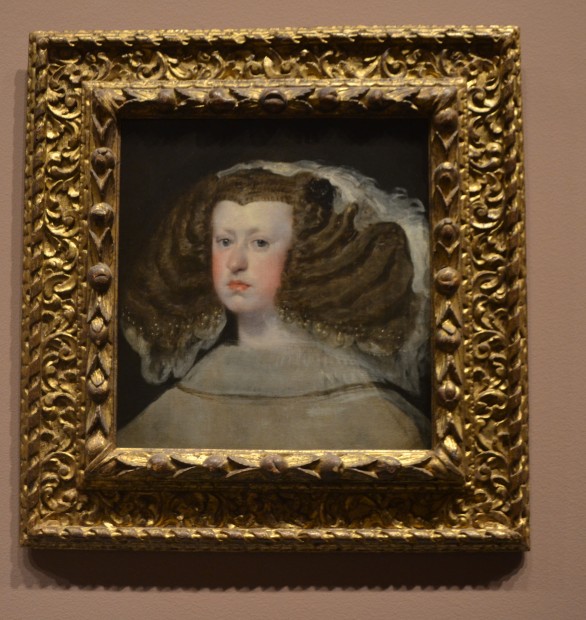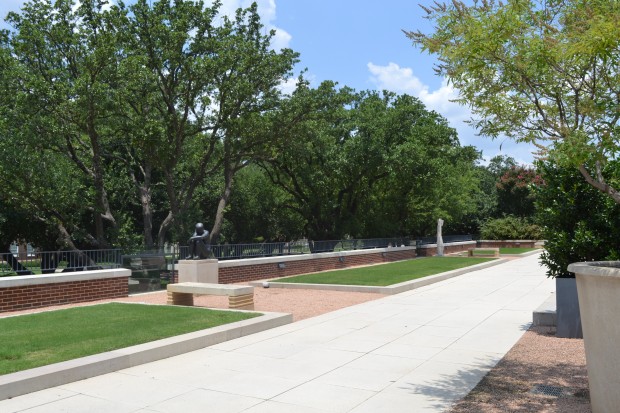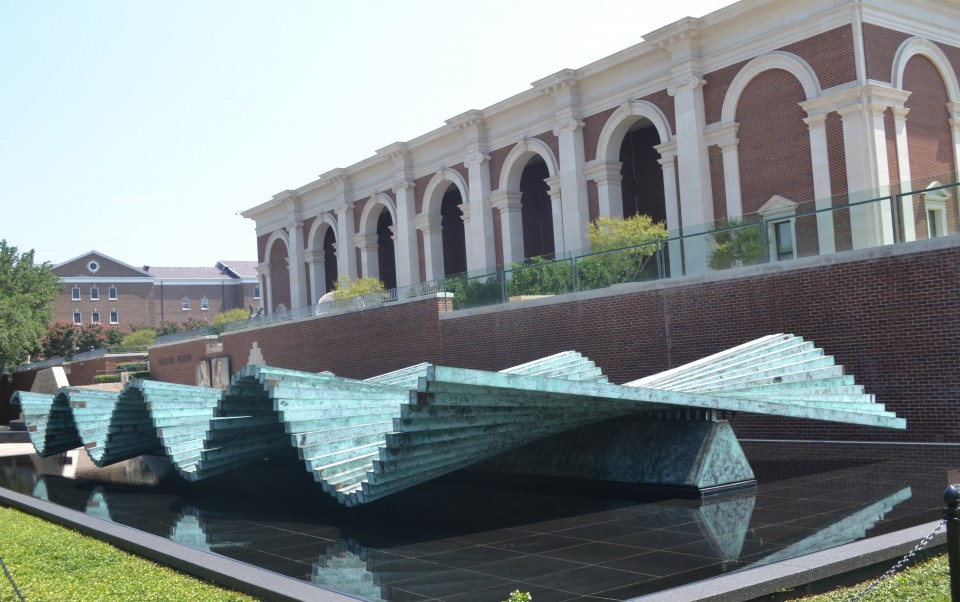
One of the largest and most comprehensive collections of Spanish art outside of Spain is right here in Dallas, Texas. This collection of Spanish art is housed at the Meadows Museum on the campus of Southern Methodist University. For years – no decades- Ever-Lovin’ and I have said we wanted to visit the Meadows Museum, but sadly – we never did. When we visited the President George W. Bush Library on the SMU campus earlier this year, we were given free passes to the Meadows Museum. That was just the incentive we needed.
The impressive moving sculpture Wave is at the entrance to the museum. Says I to myself – “This is already good.”
As we walked up the steps, we couldn’t believe what we were seeing. There is a thirteen-foot-tall sculpture called Sho by contemporary Spanish artist Jaume Plensa. The head is constructed of wire mesh (or something like that). Why were we so shocked? Well – One summer at Texas Technological College (It wasn’t Texas Tech then.) Ever-Lovin’ had to help me get through an art class. One assignment was to create a mask. We made a mask out of screen wire and it kind of – sort of resembled this sculpture. Wow!
The Meadows Museum’s building is beautiful.
Diego Rodríguez de Silva y VELÁZQUEZ (1599–1660)
Female Figure (Sibyl with Tabula Rasa) (Sibila con tábula rasa), c. 1648
Be still my heart. I love this painting.
Algar Hurtle Meadows became interested in Spanish art during his many business trips to Spain in the 1950’s. He often visited the Prado in Madrid, and eventually he began a Spanish art collection of his own. This collection he gave to SMU – plus he also provided funds for the building. The Meadows foundation continues to endow SMU and the Meadows Museum.
Juan Martín CABEZALERO (1633–1673)
Saint Jerome (San Jerónimo), 1666
Many of the Spanish paintings are of Saints. This is Saint Jerome – an early theologian. In this picture, he is a hermit whose only possessions are a crucifix and a Bible. Imagine someone surrendering so completely to Christ. I found it very moving.
Bartolomé Esteban MURILLO (1617/18–1682)
Saint Justa (Santa Justa), c. 1665
Saint Rufina (Santa Rufina), c. 1665
I thought the story behind these beautiful paintings so interesting.
According to tradition, Justa and Rufina, the patron saints of Seville, were third-century pottery sellers who secretly practiced Christianity, a religion proscribed by the Roman emperor. Their refusal to sell their wares to pagans revealed the sisters as Christians, and when they persisted in their faith, they were executed. In reference to this, each sister holds ceramic vessels and a palm frond, a symbol of martyrdom.
Domenikos Theotokopoulos, Called EL GRECO
Saint Francis Kneeling in Meditation (San Francisco arrodillado en meditación), 1605-1610
Even I had heard of El Greco. The skull is a little weird to me. There is something I am not getting.
One of my favorite paintings in the collection is of Joseph and the Christ Child. Often we see Mary and Jesus, but Joseph was certainly very important to be chosen by God to be his earthly father. (Sorry, I don’t have the information about this painting.)
Juan de BORGOÑA (c. 1470–c. 1534)
The Investiture of Saint Ildefonsus (La casulla de San Ildefonso), 1508–1514
Oh, my! There is an entire room with Renaissance alter pieces. They are wonderful.
The backstory of this painting is fascinating.
Saint Ildefonsus, a seventh-century archbishop of Toledo, was especially venerated in Spain for his devotion to the Virgin Mary and his defense of her immaculacy. As depicted here, Ildefonsus’s piety ultimately was rewarded by a miraculous visitation in which the Virgin herself bestowed upon him a golden chasuble, or bishop’s robe.
Diego Rodríguez de Silva y VELÁZQUEZ (1599–1660)
Portrait of Queen Mariana (Retrato de la Reina Mariana de Austria), 1656
The clerk in the gift shop referred to this painting as “our Queen Mariana.” It was as if she had a personal relationship with her.
Surrounding the Meadows Museum is a sculpture garden. Very nice.
You can visit the Meadows Museum Tuesday – Saturday 10:00 a.m. to 5:00 p.m. and on Sunday 1:00 p.m. to 5:00 p.m. The museum is closed on Mondays.
Admission is $10.00 for adults, $8.00 for seniors, and $4.00 for students. Children under 12 are free.
Admission is free on Thursday evenings from 5:00 p.m. to 9:00 p.m. What a deal.
Parking is also free in the museum parking garage.
There are so many more paintings and sculptures for you to see at the Meadows Museum, and I encourage you to go if you like museums. If you don’t enjoy going to museums, that is okay. We can still be friends.
Blessings to you and yours,
Information in this blog is from the Meadows Museum website, and the information at the Meadows Museum. There is more information at http://www.meadowsmuseumdallas.org.

